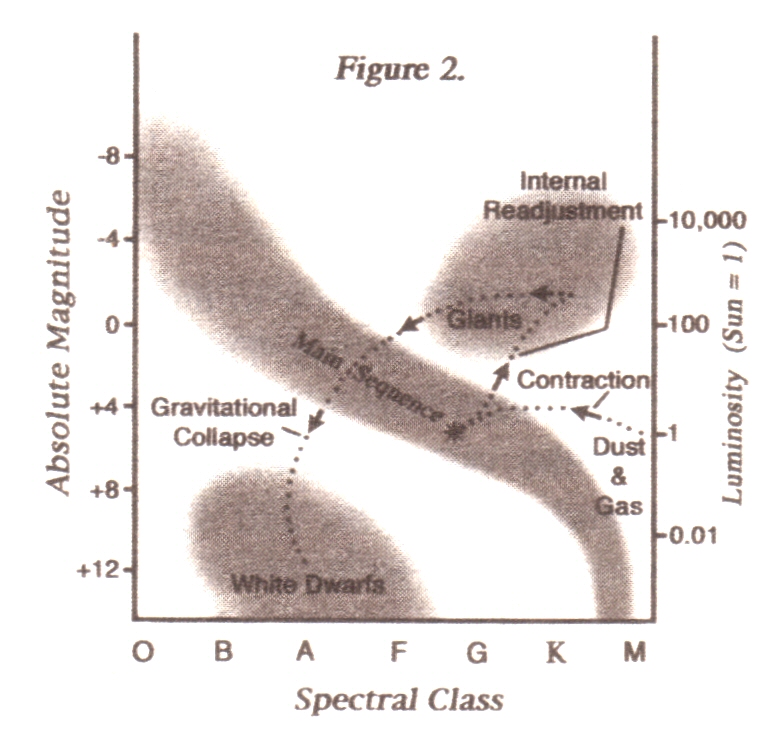THE CELESTIAL ARC-LIGHT SHOW
What we've said about the Sun obviously applies to other stars too, which means that the whole generally believed picture of stellar types and how they evolve is thrown into question. So does the revised view of the universe as an essentially electrical manifestation offer an alternative way of interpreting what's observed? Well, let's take a look at it.

Figure 2 shows the Hertzsprung-Russell (H-R) Diagram, which dates from the first decade of the twentieth century and will be familiar to any reader of basic astronomy. It shows the empirical relation found between the temperature, or spectral class, of stars, and their intrinsic luminosity. Hence, it is a plot of actual observations, not something deduced from a theory, so any viable model of stellar behavior must be consistent with it. Spectral class, defined by color, is plotted horizontally, ranging from hottest at the left to coolest at the right. The vertical scale is labeled both with Absolute Magnitude, a measure of the actual luminosity of a star that takes into account its distance from the Earth (determined from its parallax, the apparent displacement seen from different positions as the Earth orbits the Sun); or alternatively Luminosity, the total amount of radiation emitted, expressed at a multiple of that of the Sun. The Sun, being a fairly typical star, falls near the center of the diagram, with Luminosity = 1, Absolute Magnitude = 5, Spectral Class G, and (photospheric) Temp. = 6,000o K.
The conventional interpretation, premised on the assumption that stars are driven by Hydrogen-Helium fusion, is that they evolve through various stages of burning as they use up their fuel, in the process slowly migrating from one part of the H-R diagram to another over spans of hundreds of thousands of years. Initially, a cloud of gas and dust coalesces under gravitation, and when thermonuclear ignition is reached, takes its place in the Main Sequence, where it enters the major portion of its stable life. This is where the majority of stars are found. Eventually, the helium "ash" accumulating at the core necessitates internal structural readjustment for burning to continue. This results in expansion and an increase in luminosity, taking the star into its Giant phase. Its time here is typically much shorter than on the Main Sequence and lasts until the helium core collapses under its own weight. This initiates higher temperatures, which enable first the helium itself to begin burning into heavier elements, and then, in turn, carbon, oxygen, and so through to iron. As mentioned earlier, elements beyond iron can't be produced by regular thermonuclear fusion.